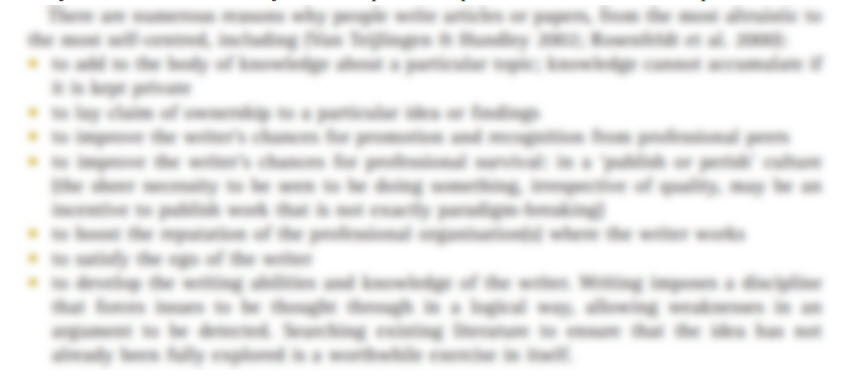In my writing workshops, I am often asked how to write or structure an executive summary. In this blogpost I list seven frequently-asked questions and my answers. Please note that I provide general advice here and that the exact nature and structure of any report or report sections, including the executive summary, may depend upon many factors including industry or discipline, report type and purpose and target audience.
What is an executive summary?
An executive summary is the section of a technical, scientific or business report report that summarises key features of the project or proposal.
What is the purpose of the executive summary?
The target audience of a report should be able to fully understand, and be able to act upon, the key findings written within the summary without having to read the rest of the report. Readers that rely on a clear, accurate executive summary are often those people who make funding, personnel, or policy decisions and need to assess information quickly and efficiently.
As the executive summary is often the first part of the report, it also has a role of engaging the reader and immediately informing them of the purpose, procedure and findings of the project. If the executive summary fails to engage the reader, the report could be discarded and left unread.
What are the essential components of an executive summary?
An executive summary should contain the essential outcomes or findings of the report that have direct relevance to the practical, operational, managerial or reporting requirements of its target audience. An executive summary should explain the scope of the study, the problems or issues that need to be addressed, how they were assessed and provide the findings and conclusions and recommendations arising from these conclusions.
How should an executive summary be structured?
The executive summary should stand alone and be independent of the report. Firstly, determine if there are guidelines within your organisation or industry or with your stakeholders that dictate the content and structure of an executive summary. The structure could mirror the structure of the full report, but whether this is necessary might depend upon the type and purpose of the report.
The executive summary should include a brief summary of every section of the report. Depending upon templates and industry guidelines, and upon the length of the summary, headings and bullet points can be used. Avoid presenting too much information as bullet points as this can unnecessarily increase the length of the executive summary.
Depending upon the type of report, the executive summary might include a summary of the following:
- Project description: project aims and objectives, issues or problems that need solving, outline of who the report is designed for and the client requirements or deliverables.
- Background: factors that lead to the development of the current project. What partners or stakeholders are involved and an outline of their requirements.
- Process or methods: procedures or actions that were necessary to complete the project. How data was collected and assessed or analysed.
- Findings and conclusions. How, or if, the problems were addressed or solved.
- Implications and recommendations of findings and conclusions.
- Who is responsible to undertake recommendations and how outcomes are to be communicated or acted upon.
- Implications for future work and development of policies.
How much detail should be included in the executive summary?
As key decisions are often made by only reading the executive summary it is imperative that all relevant information is presented. Ensure that any generalisations do not mask important points. In the process of summarising the key findings, it is essential that crucial caveats, stipulations, qualifications or limitations are not omitted. Nevertheless, the executive summary should be as concise as possible yet still provide the minimum amount of information or evidence needed to support the report’s findings, conclusions and recommendations. All conclusions and recommendations presented in the executive must be fully explained in further details in the body of the report. This is especially important in case your reports and other documentation need to be audited in the future.
What information should not be included in an executive summary?
Do not introduce any new information that is not in your report. Avoid using acronyms, in-house terminology or any other words or phrases that your target audience will not be familiar with. Avoid copying sentences and paragraphs from the report into the executive summary: this is not summarising.
What is the optimum length of an executive summary?
The length of an executive summary depends upon the length and purpose of the report. If the report is short, the length might be less than half a page while executive summaries of large reports could be 5-30 pages in length.
How is an executive summary different to an abstract?
Executive summaries are found in all types of reports, including non-scientific documents, whereas abstracts are summaries of scientific or academic peer-reviewed research papers. Readers of reports may act upon the information presented in an executive summary without reading the rest of the report, whereas the abstract of papers provide an overall summary and readers should read the entire paper before making their own interpretations of the study’s findings. This is especially important when citing information presented in a research paper. One should not cite the findings of a research paper after having only read the paper’s abstract.
© Dr Marina Hurley 2019 www.writingclearscience.com.au
Any suggestions or comments please email info@writingclearscience.com.au
Find out more about our new online course...
Now includes feedback on your writing Learn more...
SUBSCRIBE to the Writing Clear Science Newsletter
to keep informed about our latest blogs, webinars and writing courses.
F
FURTHER READING
- 11 common mistakes when writing an abstract
- The essentials of science writing: identify your target audience
- Co-authors should define their roles and responsibilities before they start writing
- The difference between a writing rule and a good idea
- When to cite and when not to
- Back to basics: science knowledge is gained while information is produced
- How to build and maintain confidence as a writer
- If science was perfect, it wouldn’t be science
- The essentials of science writing: What is science writing?
- 8 steps to writing your first draft
- Two ways to be an inefficient writer
- Work-procrastination: important stuff that keeps us from writing





